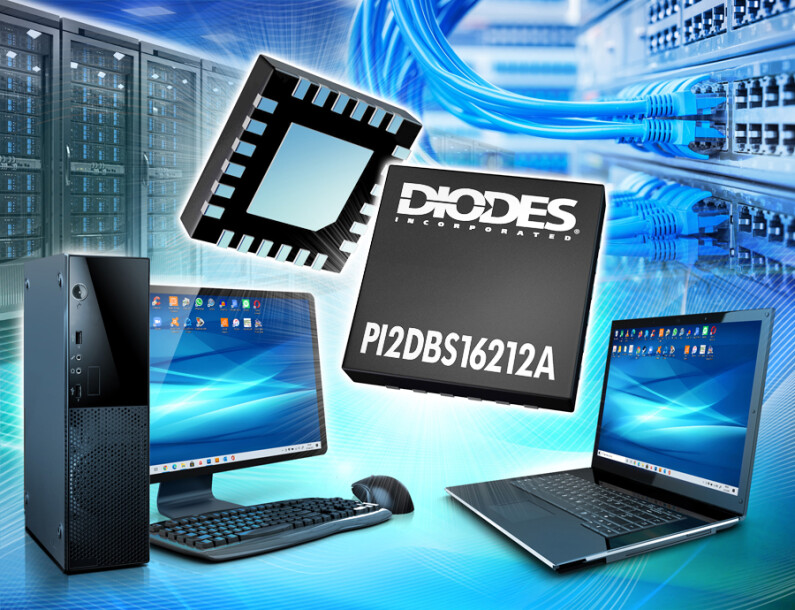Mux/Demux Delivers High-Speed Switching at 1.8V for Reduced Power Consumption

By John Bai, HPI BU Marketing Director
For IoT or handheld devices, it is often essential to achieve very low power consumption. This has led to an increasing trend to reduce power supply voltages for electronic devices, since power losses in a conductor are proportional to voltage squared.
Specifically, designers are moving to a 1.8V voltage rail rather than the higher voltage of 3.3V, where possible. This can reduce power consumption by 45%. As less power is being drawn from the battery, the time between charges increases and enables the use of smaller, lighter batteries.
In this blog, we'll look at one product area—the high-speed mux/demux switch—and explain how the PI2DBS16212A from Diodes Incorporated (Diodes) supports 1.8V without compromising signal integrity.
Mux/Demux Requirements
Multiplexers (mux) are used to select between multiple electronic signals, which can be analog or digital, and to forward the chosen signal to one output. The complementary component is a demultiplexer (demux), which takes a single input and routes it to one output chosen from multiple options.
With digital data, using a mux and demux enables multiple signals to be independently routed over a single data path. For example using "time division multiplexing" to manage how each signal uses the line in turn for a pre-agreed time interval.
In practice, a single device may well have the capability to provide bidirectional operation, so it can be used as both a mux and demux. In high-performance computing applications, there is a need for high-speed mux/demux switches that can handle serial digital data at very high speeds, while preserving the integrity of the signal.
The Diodes Advantage
To meet these requirements, Diodes has launched the PI2DBS16212A, a high-speed, low-power mux/demux. The device's bidirectional operation enables it to operate as both a differential signal path multiplexer and demultiplexer, and it provides 2-to-1 switching for two channels, increasing flexibility for designers.
The P12DBS16212A supports data rates of up to 20Gbps due to its fast 14GHz -3dB bandwidth. This makes it suitable for the latest high-speed serial protocols including PCIe 4.0®, USB 3.2 Gen1, USB 3.2 Gen2, 10GE, Thunderbolt 4™, SAS3.0®, and SATA3.0®.
To minimize power consumption, the PI2DBS16212A uses a 1.8V supply voltage and typically draws only 200µA. The device is provided in a small 24-pin TQFN package, making it ideal for portable applications where space is tight.
Signal integrity is maintained due to the excellent electrical characteristics of the mux/demux. These include low insertion loss (-1.25dB at 10GHz), low return loss (-12dB at 10GHz), and differential crosstalk of -40dB (typical, depending on frequency). Bit-to-bit skew is 10ps (maximum), channel-to-channel skew is 20ps (maximum), and propagation delay is 50ps (maximum).
As lower voltage designs become increasingly popular and high data rates more common, this kind of mux/demux switch provides the high speed and excellent signal integrity required in today’s portable, battery-powered products.
The Diodes logo is a registered trademark of Diodes Incorporated in the United States and other countries.
All trademarks are the property of their respective owners.
© 2024 Diodes Incorporated. All Rights Reserved.
